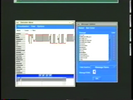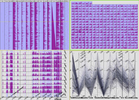



When designing context-aware applications, it is difficult to for designers in the studio or lab to envision the contextual conditions that will be encountered at runtime. Designers need a tool that can create/re-create naturalistic contextual states and transitions, so that they can evaluate an application under expected contexts. We have designed and developed RePlay: a system for capturing and playing back sensor traces representing scenarios of use. RePlay contributes to research on ubicomp design tools by embodying a structured approach to the capture and playback of contextual data. In particular, RePlay supports: capturing naturalistic data through Capture Probes, encapsulating scenarios of use through Episodes, and supporting exploratory manipulation of scenarios through Transforms. Our experiences using RePlay in internal design projects illustrate its potential benefits for ubicomp design.


Data quality is critical for many information-intensive applications. One of the best opportunities to improve data quality is during entry. Usher provides a theoretical, data-driven foundation for improving data quality during entry. Based on prior data, Usher learns a probabilistic model of the dependencies between form questions and values. Using this information, Usher maximizes information gain. By asking the most unpredictable questions first, Usher is better able to predict answers for the remaining questions. In this paper, we use Usher's predictive ability to design a number of intelligent user interface adaptations that improve data entry accuracy and efficiency. Based on an underlying cognitive model of data entry, we apply these modifications before, during and after committing an answer. We evaluated these mechanisms with professional data entry clerks working with real patient data from six clinics in rural Uganda. The results show that our adaptations have the potential to reduce error (by up to 78%), with limited effect on entry time (varying between -14% and +6%). We believe this approach has wide applicability for improving the quality and availability of data, which is increasingly important for decision-making and resource allocation.



Data quality is critical for many information-intensive applications. One of the best opportunities to improve data quality is during entry. Usher provides a theoretical, data-driven foundation for improving data quality during entry. Based on prior data, Usher learns a probabilistic model of the dependencies between form questions and values. Using this information, Usher maximizes information gain. By asking the most unpredictable questions first, Usher is better able to predict answers for the remaining questions. In this paper, we use Usher's predictive ability to design a number of intelligent user interface adaptations that improve data entry accuracy and efficiency. Based on an underlying cognitive model of data entry, we apply these modifications before, during and after committing an answer. We evaluated these mechanisms with professional data entry clerks working with real patient data from six clinics in rural Uganda. The results show that our adaptations have the potential to reduce error (by up to 78%), with limited effect on entry time (varying between -14% and +6%). We believe this approach has wide applicability for improving the quality and availability of data, which is increasingly important for decision-making and resource allocation.










Exertion activities, such as jogging, require users to invest intense physical effort and are associated with physical and social health benefits. Despite the benefits, our understanding of exertion activities is limited, especially when it comes to social experiences. In order to begin understanding how to design for technologically augmented social exertion experiences, we present "Jogging over a Distance", a system in which spatialized audio based on heart rate allowed runners as far apart as Europe and Australia to run together. Our analysis revealed how certain aspects of the design facilitated a social experience, and consequently we describe a framework for designing augmented exertion activities. We make recommendations as to how designers could use this framework to aid the development of future social systems that aim to utilize the benefits of exertion.





Time-series graphs are often used to visualize phenomena that change over time. Common tasks include comparing values at different points in time and searching for specified patterns, either exact or approximate. However, tools that support time-series graphs typically separate query specification from the actual search process, allowing users to adapt the level of similarity only after specifying the pattern. We introduce relaxed selection techniques, in which users implicitly define a level of similarity that can vary across the search pattern, while creating a search query with a single-gesture interaction. Users sketch over part of the graph, establishing the level of similarity through either spatial deviations from the graph, or the speed at which they sketch (temporal deviations). In a user study, participants were significantly faster when using our temporally relaxed selection technique than when using traditional techniques. In addition, they achieved significantly higher precision and recall with our spatially relaxed selection technique compared to traditional techniques.